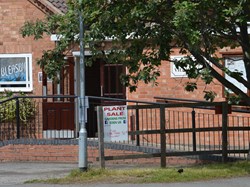Village Hall Plaque
Research found that this plaque was put in place by the Bleasby British Legion members when it was founded in the late 1930s. The plaque records 36 names of men who served and were not killed in action, despite what the wording says, and represents members of the Bleasby community in the mid to late 1930s by which time the village had grown in terms of mix and size of population.
Only 8 (out of the 36) of the men on this plaque are found recorded on the 1911 Bleasby Census, as follows:
Thomas Crowder - Brickyard Farm
Samuel Holmes – Gibsmere
George Lidgett - Gibsmere
James Smith – Bleasby
John Weston – Goverton
Samuel White – Notown
Harry Wilkinson – Gibsmere
There is a Harold Kemp on the 1911 census, but the plaque does not have his name on it. It has two other Kemps instead.
The Census does not generally record house names or numbers.
This plaque should be read in the context of the population of Bleasby at the time. The 1901 Bleasby Census records only 40 males under the age of 20, of which c 25 were under 10 years of age so would be of fighting age by 1914. 3 of these were killed, and 4 are on the plaque referred to above.
It is also worth noting that the above mentioned plaque does not record the names of the other 3, possibly 4, Marsh brothers who were all born in Gibsmere/ Bleasby and who we know served and survived – Alfred, Charles and Joseph, and possibly the eldest Frank (he would have been in his 30s so maybe too old). Joseph Marsh junior, father of the six Marsh boys, died on 18thJune, 1933, and is buried at St Marys Church. His wife Emily left the village at that time. Joseph Marsh senior founded his wheelwright business in Bleasby in the 1850s, at premises next to the Waggon and Horses. The Halls’ woodyard business today traces it's origins back to the Marsh business.


